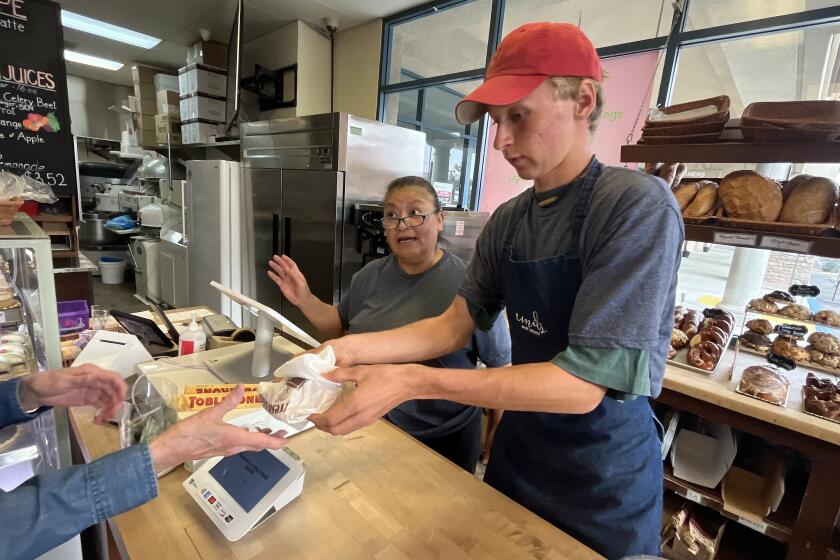79 Years After Quake, Memories Abound
Blanch Martin, 93, remembers the dreadful day when time stood still, but she didn’t.
Hopping out of bed, with the city’s clocks jolted to a halt at 5:12 a.m., Martin felt her room quiver. Soot was thick in the air, shelves had fallen and every dish was shattered.
It was April 18, 1906. The worst recorded earthquake in California history had just struck along the San Andreas fault. The shock, at a magnitude of 8.3 on the Richter scale, ripped the earth’s surface along the coast for a distance of 200 miles, from San Juan Bautisto to the mouth of Alder Creek in Mendocino County.
Home Burned Down
“I had felt earthquakes before, and I used to think they were funny. Not any more,” said Martin, who was 14 when the quake hit. She said the family home survived the jolt but later burned down. Outside, she saw two neighbors killed by falling debris.
“We lost everything, I guess, except a little meat grinder,” Martin said. “I still have it.”
Nearly 700 people were killed and $400 million in damage was caused by the quake and fires that followed. Downtown San Francisco was consumed by flames.
The city of Santa Rosa, 90 miles to the north, was flattened. A crack opened near the quake’s epicenter in Olema on the Marin County coast and swallowed Mathilda the cow before it closed, leaving only the poor beast’s tail showing.
Saw 2 Looters Shot
As a boy of 6, Benedict Lawson was wandering the littered San Francisco streets when he saw two looters shot and killed by patroling militiamen.
“This one fellow dug his own grave,” the 85-year-old Lawson said. “When he got finished, the guardsman shot him and covered him up.
“Another man was on a rooftop trying to burn a flagpole. They got him with one shot. It’s the kind of thing you don’t forget.”
Although survivors remember the horror, there was also excitement--and a great deal of camaraderie among those who can still trade reminiscences.
On this year’s 79th anniversary, Martin and Lawson joined nearly 300 other earthquake survivors on a free ferry ride provided by the Golden Gate Bridge District.
“They really light up for this thing,” said bridge spokesman Bruce Selby, who sends personal invitations to each survivor for the yearly ferry ride with coffee and cake. The event began in 1979. “For some people, this is their yearly get-together where they can sit around and share their experience, both joyful and tragic.”
South of Market Boys
Jack Downey, the oldest active boxing referee in the state, joined other members of the South of Market Boys, a club of earthquake survivors who lived south of the Market Street cable car line when the temblor struck.
The club, which was started in 1923 and at its height had 2,000 members, has dwindled to 300 and may soon incorporate with a South of Market women’s group.
Although Downey, 79, was only 4 months old when the quake hit, he has three older brothers who join him every year. Arthur, 90, comes in from Tacoma, Wash.; Michael, 85, lives in San Francisco; and James, 83, comes in from Wawona near Yosemite National Park.
Downey said he has been told how his parents and the seven children in the family had to flee with only the clothes on their backs.
‘Trigger-Happy Cadets’
“My mother said she was nursing me and had lit a candle when a militiaman came by and told her to put out the light or he’d shoot her,” Downey said. “My mother, who came from Ireland, called them trigger-happy cadets.”
He said his father, a tugboat captain who came from Ireland around Cape Horn on the same ship as his mother, survived the quake only to die in the great flu epidemic of 1918.
More to Read
Sign up for Essential California
The most important California stories and recommendations in your inbox every morning.
You may occasionally receive promotional content from the Los Angeles Times.










